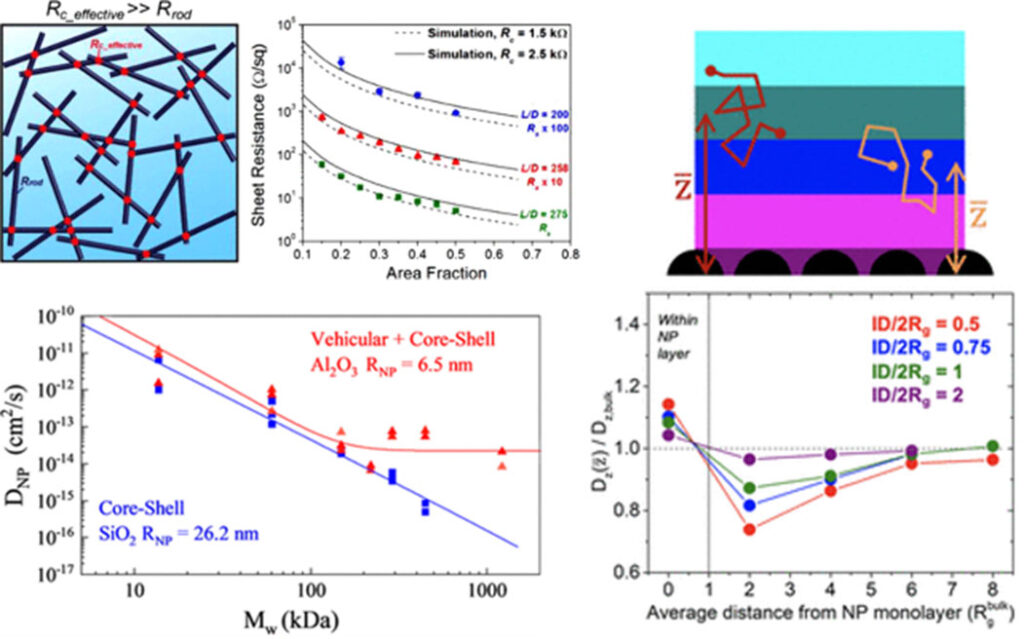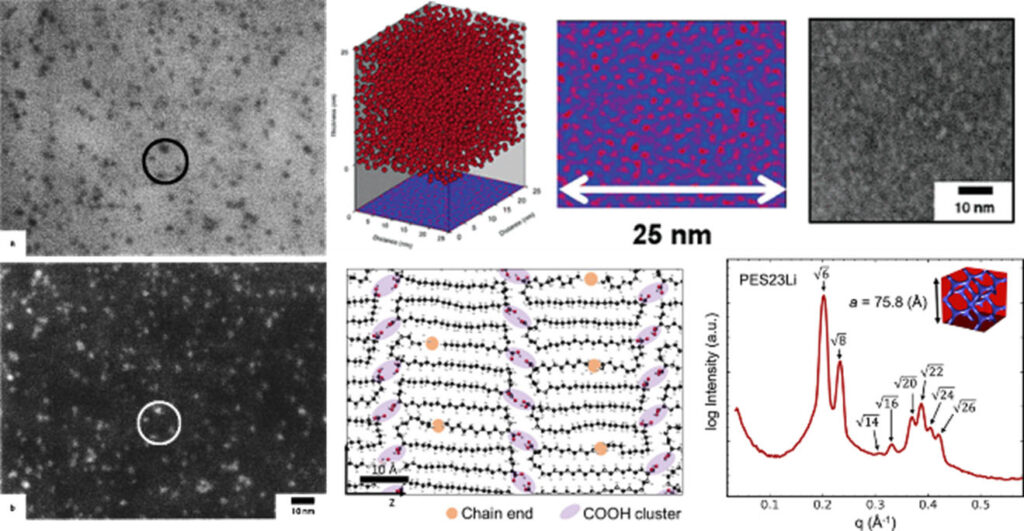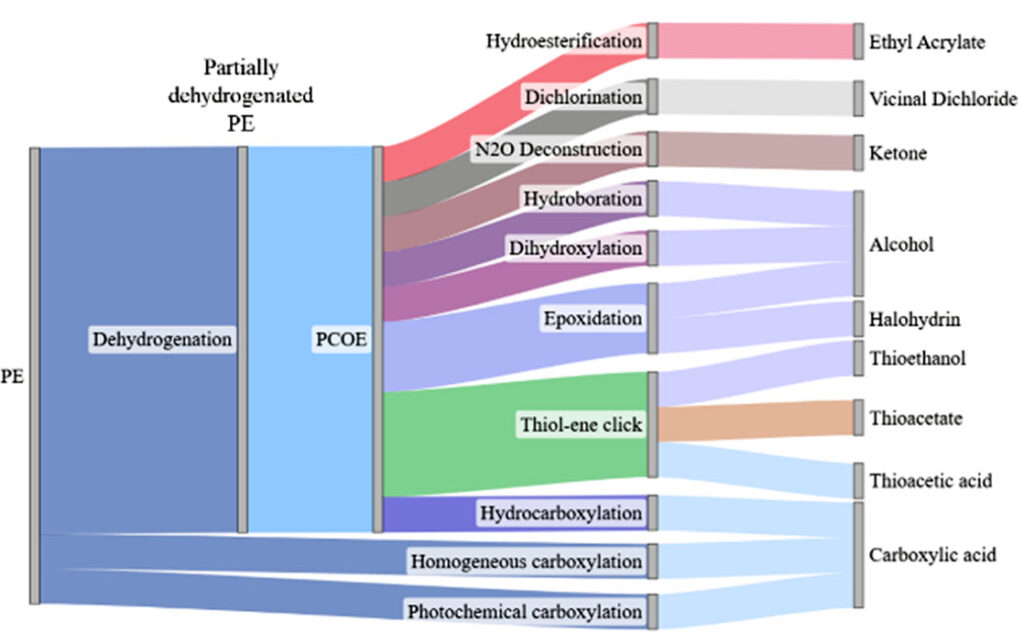Connecting Polymer Microstructure to Ion and Proton Conductivity
As the polymer science community struggles to develop fluorine-free polymer electrolytes with suitable ion or proton conductivity, the Winey group is pioneering strategies that capitalize on her advanced understanding of polymer morphology.

Polymer and Nanoparticle Diffusion in Polymer Nanocomposites & Devices
The Winey group began studying polymer nanocomposites when carbon nanotubes were first available and has contributed broadly to the field including innovative fabrication methods, reducing flammability, and extracting contact resistance. Currently, the group is building upon their knowledge of how polymers and nanoparticles move in nanocomposites to understand how catalyst particles diffuse in electrochemical devices.

Revolutionizing the Understanding of Ionomer Morphologies
The Winey research group has revolutionized the understanding of ionomers. Prior to their contributions, ionomers were thought to have spherical ionic aggregates. We have demonstrated that the ionic groups can self-assemble into a wide array of nanoscale morphologies without and, remarkably, with long-range order. Consequently, new applications for ionomers are being envisioned.

Polymer-to-Polymer Transformations to Reduce Plastic Waste
Winey is leading a team endeavoring to transform polyolefins into higher-value polyolefins by installing functional groups onto the polymers. The team explores both direct functionalization and dehydrogenation followed by functionalization.

